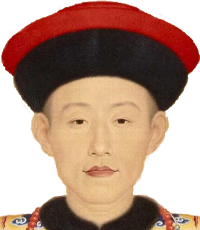The Xiongnu Confederation
The Xiongnu were a pastoral people who formed a state, or rather a loose confederation of tribes, on the steppes to the north and west of China already two thousand years ago. The Xiongnu were the original Chinese example of an unsettled, uncivilized, nomadic people and the name itself means “fierce slave” in Chinese. Already the very first Chinese rulers made war on the Xiongnu. Qin Shi Huang, the First Emperor, drove them away from the plains of the Yellow river and forced them to retreat to the Mongol plains. But the Xiongnu continued to cause trouble. In 200 BCE, emperor Gaozu personally led a military campaign against them, but was ambushed and only barely escaped with his life.
Instead the Han emperors sought to pacify the Xiongnu by means of lavish gifts of silk, liquor and rice, and they sent princesses to their leaders as brides. Official treaties were tried too – the first one signed in 195 BCE – and, unusually for the Chinese, they were concluded on a basis of equality. However, each time the treaty was to be renewed, the Xiongnu asked for higher payments and in the end the Chinese were effectively transformed into tribute-bearers to Xiongnu rather than the other way around. Dealing with people like this was humiliating, ineffective and expensive. And despite the various agreements, Xiongnu raids on Chinese settlements continued. Eventually, the power of the Xiongnu declined. The Chinese exploited divisions within the members of confederacy whose leaders never found an orderly way to settle matters of succession. Eventually a southern group of Xiongnu tribes defected to the Chinese.
The ethnic background of the Xiongnu is disputed – they may have been Turks, Mongols, Huns or perhaps Iranians. Recently several Xiongnu burial sites have been excavated in Mongolia and archaeologists have found works of art, including small statues of tigers carrying dead prey and golden stags with heads of eagles.

